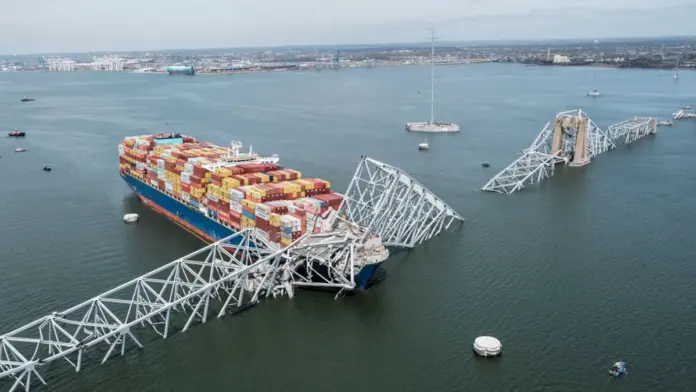The Francis Scott Key Bridge collapse in Baltimore caused shockwaves that extended far outside city borders. One year after the devastation, its economic ripple still flows through industries and communities throughout the region. From food delivery and freight to hair salons and dance studios, the disaster interrupted livelihoods and invoked a mass emergency response. And now, with more than $128 million in federal funding allocated, the road to recovery has finally began.
The Financial Consequences of the Key Bridge Disaster
The collapse of the bridge, which leads to the traffic just north of the Port of Baltimore, immediately disrupted regional trade. The port is one of the East Coast’s busiest cargo hubs, and its temporary shutdown left supply chains in shambles. For numerous small and mid-sized firms, the disruption was economically disastrous.
A total of 6,377 EIDL applications were filed with the U.S. Small Business Administration (SBA) due to the disaster. Of these, 2,343 nonprofit and business firms received a total of $128,641,608 in relief. These resources played a vital role in helping firms meet fixed debt, salaries, and other costs of operation during the halt of their income streams.
Also read: Mark Zuckerberg Considered Deleting All Facebook Friends: Find Out Why
Who Was Affected Most Harshly?
The financial impact didn’t discriminate. SBA loan recipients cut across various industries and states. Taxi and ride-hailing services were the worst hit, receiving almost half of the total amount distributed. Most of these businesses relied on the bridge and the port district for everyday business and client access. Freight trucking companies and full-service restaurants were also among the most severely impacted, making up the top three industries that received relief.
The scope of this funding stretched far beyond Baltimore. Companies as far away as Uniontown, Pennsylvania; Ocean City, Maryland; Lancaster, Pennsylvania; and Painter, Virginia were loaned money.
A Business on the Brink
Michael Clark, proprietor of BTR Capital Group which is a Baltimore warehousing and logistics company illustrates the magnitude of effect. His business, which was dependent completely on cargo coming through the Port of Baltimore, had operations come to a virtual standstill overnight.
“When the bridge went down, it was pandemonium,” Clark recounted. “Our company, in large part, closed down right away.” BTR was among five companies to be awarded more than $500,000 in disaster loans, totaling $857,800. A state grant of $250,000 also was used to pay worker salaries at the worst point in the crisis.
Whereas the U.S. Army Corps of Engineers acted quickly to reopen access to the port, Clark’s company took about eight months to pick up again. Delays were fueled by the threat of a strike among the laborers at the port, which kept cargo from coming back into Baltimore.
Delays in Aid and Lessons Learned
Clark’s tale emphasizes the main problem: federal relief speed. Although Maryland state grants came within six weeks, the SBA loan took five months to disburse. “That was the biggest challenge,” Clark said. “We waited until the wire for the SBA loan. But ultimately, it was our lifeline.”
The SBA loans had beneficial terms, 4% for small businesses, 3.25% for nonprofits, and repayments after a year after disbursement. But the delayed receipt highlights the bigger picture: timing is critical when companies struggle to remain alive.
The Road to Recovery
As Baltimore enters a second year after the disaster, recovery persists. Warehouses are filling up once more, delivery trucks are back on the roads, and restaurants are opening their doors to customers. Yet, the collapse of the bridge was a stark reminder of the importance of infrastructure to economic stability.
For others, the SBA loan wasn’t a check, it was a second chance. And although not all businesses that applied received assistance, the overall response from state and federal governments has been a crucial factor in enabling Baltimore and the surrounding area to get back on its feet.
As the infrastructure is reconstructed and new blueprints are made to avoid such catastrophes, the Key Bridge’s story continues to be a lesson in resilience, reaction, and the practical effect of frayed links — literal and financial.








